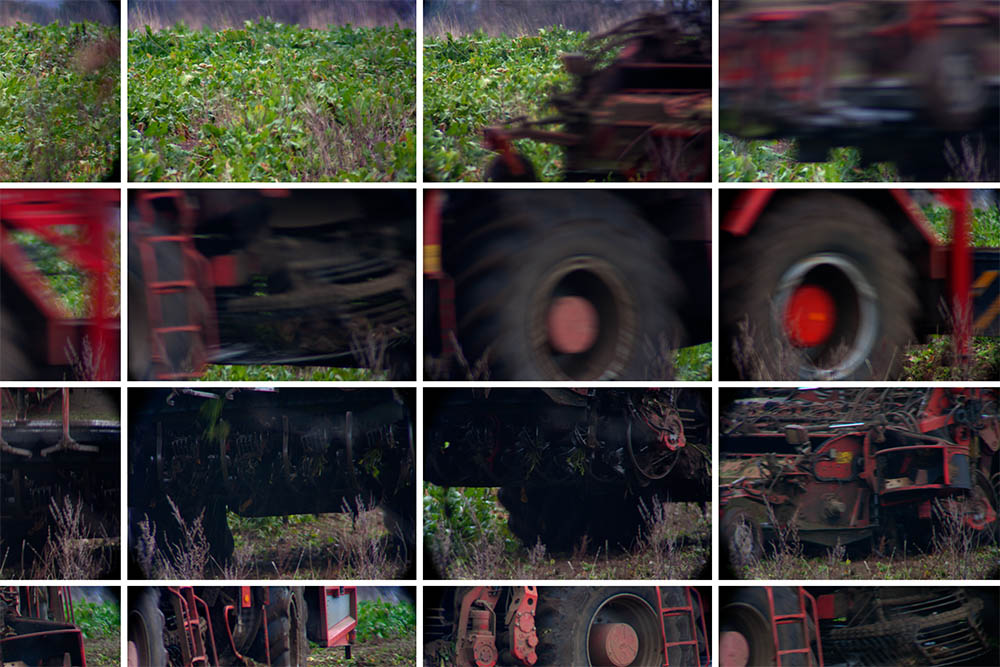
A Window: Butley (The Harvest), detail.
2015.
In 1826 or 1827 Nicéphore Niépce made what is thought to be the earliest surviving photograph: a view from the window of his workroom at Le Gras, Saint-Loup-de-Varennes, in eastern France. Fox Talbot’s earliest surviving negative (from August 1835) was of a window at Laycock Abbey. Painters and photographers have often been drawn to windows: a ubiquitous frame that crops and controls, reveals, and restricts our everyday vision.
I live in rural Suffolk, in a semi-detached house on a site where, from the 1170s until the sixteenth century, stood Butley Priory, a large Augustinian community and a centre of learning. Now, to the north the house looks onto a 6 acre wood which was the Priory burial ground, to the east onto fields where brick kilns once stood and to the south onto semi derelict farm buildings: a 1960s grain store and an eighteenth century cart bay. To the south-east there is a glimpse of the sea where, 5 miles away, huge container ships can be seen on their way into or out of Felixstowe Docks. Close to the house there is an ever changing garden and in the distance there are woods, grazing cattle, arable fields, salt marshes and hills that were once islands.
I attempt to photograph some of this, through my window, but I try to avoid making a view. In the past I have often made works by, in a particular place or in front of a specific subject, exposing whole films using a camera with a long telephoto lens, avoiding the exercise of any visual judgement by not looking through the viewfinder, pressing the shutter release attentively but aimlessly, and then printing all thirty six frames to see what the camera saw. To photograph A Window: Butley I've acquired a 100mm telescope, the type used for bird spotting, and try to use similar techniques. I choose a subject, but then relinquish some of the control. Sometimes moving the lens carelessly within the subject area, taking pictures as fast as I can (see The Grain Store): sometimes focusing on a particular point before and after and during an event (see The Beet Harvest).
My telescope is not as refined as a camera lens, the image goes soft towards the edges, has no depth of focus and suffers from chromatic aberration (purple/yellow fringing). I make this worse by keeping the window shut, so shooting through another two panes of glass. I welcome these reminders that you are not looking at the world, but at an image: light bent through lenses, turned into its analogue as digital data and processed into coloured light on a screen or ink on a sheet of paper.

A Window: Butley (The Harvest), detail.
2015.
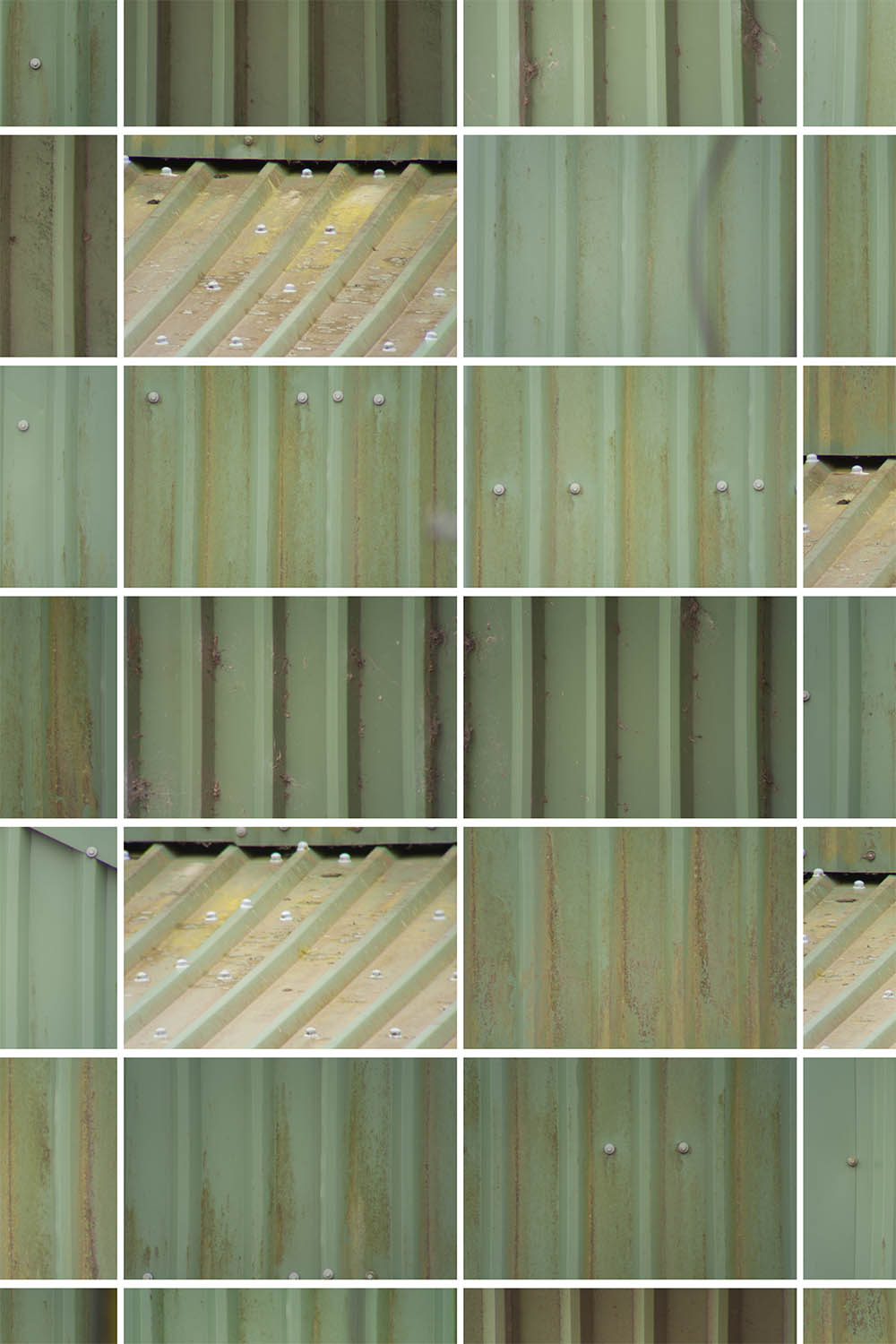
A Window: Butley (The Grain Shed), detail.
2015.
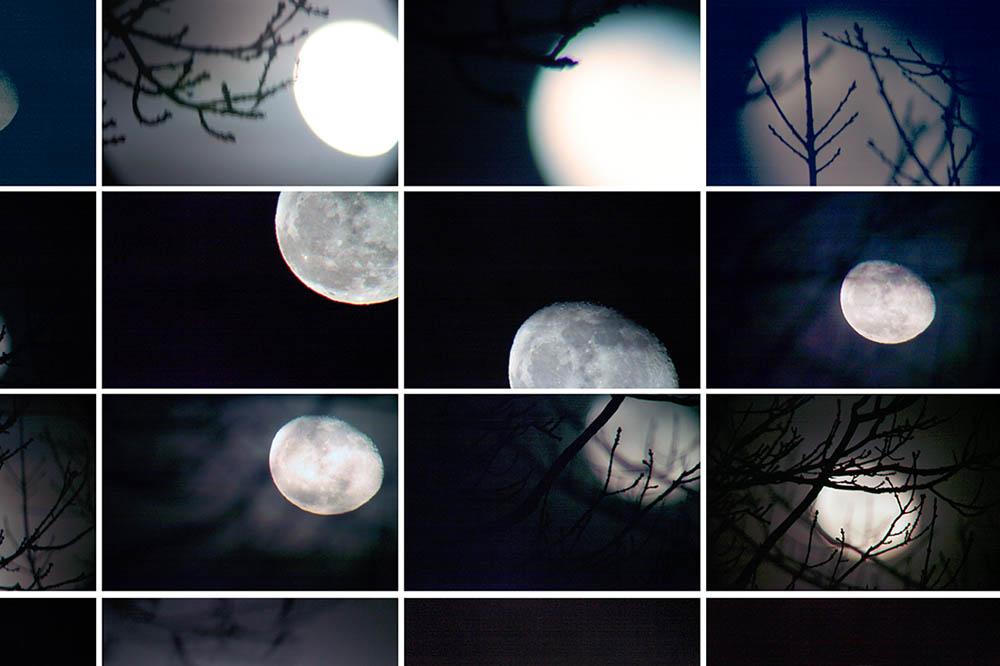
A Window: Butley (Moonrise over Butley High Corner), detail.
2015-2017.
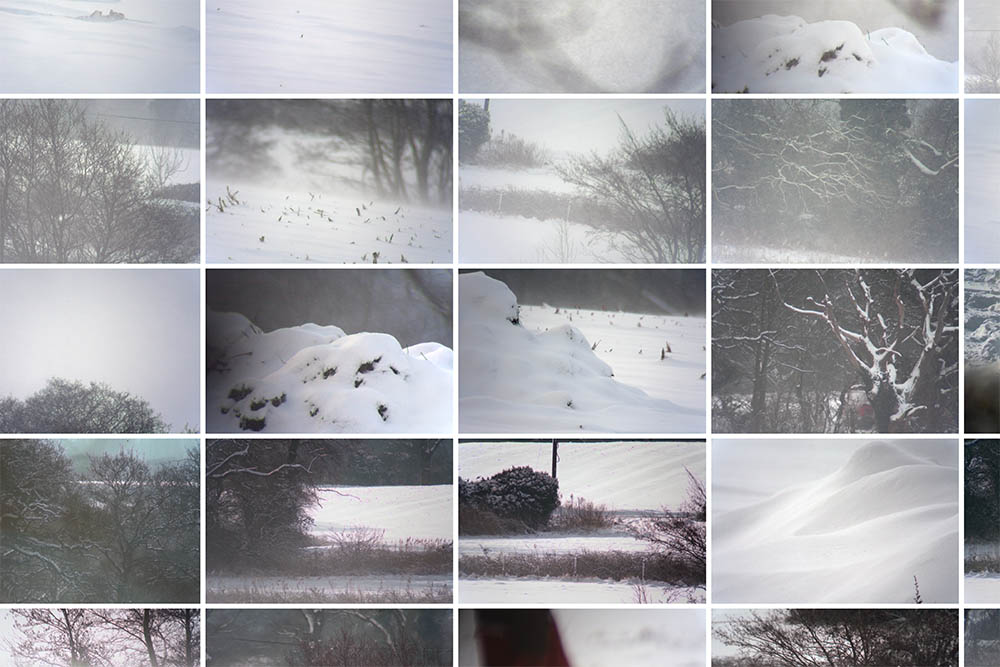
A Window: Butley (Across Parks to Stonebridge Marshes), detail.
2018.
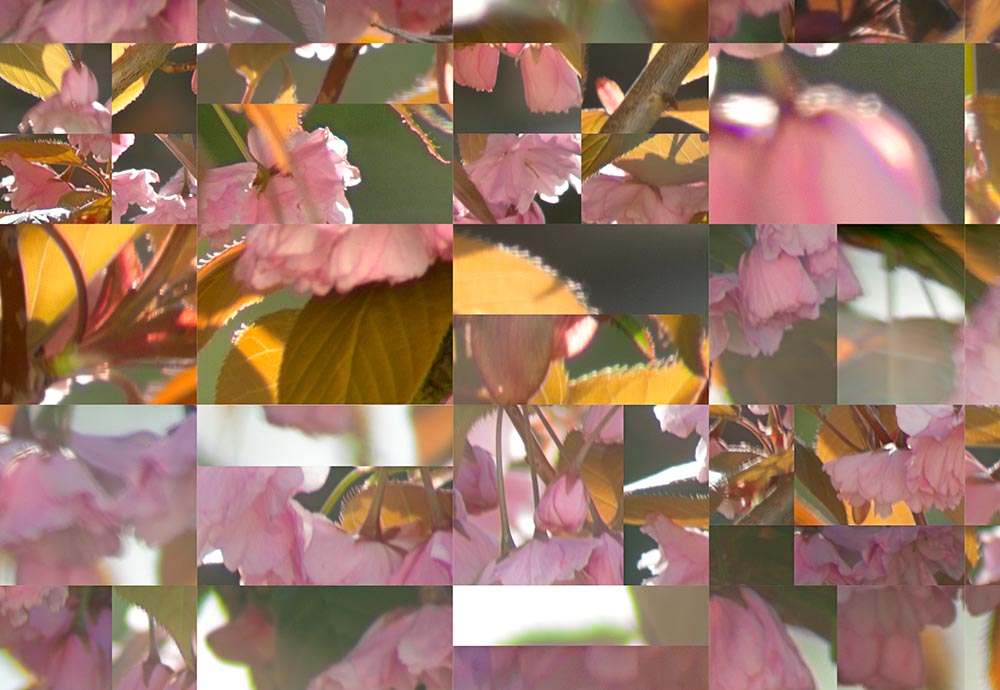
A Window: Butley (Kanzan), 1.5.2018, (detail).
2018.
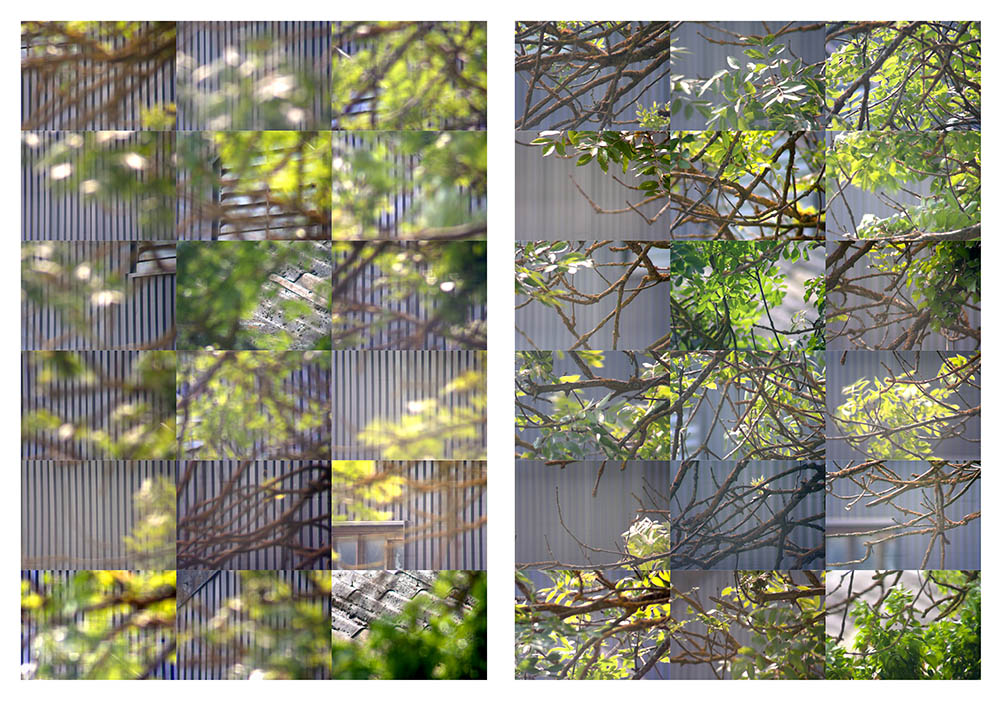
A Window: Butley (The Farm Workshop and the Ash), 29.5.18.
2018.
Images and texts by P.F.WHITE (Peter Frankland White). ACTIVE: 196Os to the present. LOCATION: Europe (United Kingdom). SUBJECTS: vision, perception, location, time(s), class, power, rhilopia. STYLE: exploratory, aggregative, aleatory, attentive, punctum averse.
All material (except where otherwise acknowledged) is © Peter Frankland White, , and may not be reproduced in any form without written consent. See: Notes on Rights, Ethics, Privacy and Consent. Page design by Allpicture.